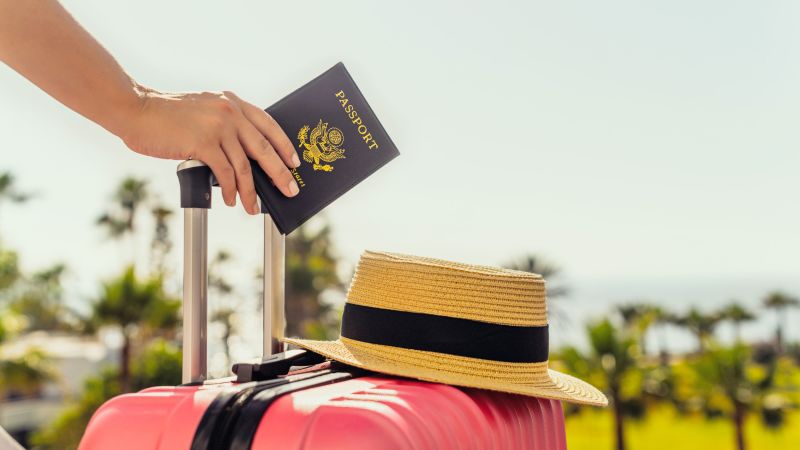Justin Albertynas, a travel industry expert based in Vilnius, Lithuania, has some good news for US travelers who might be a bit self-conscious about the “ugly American” stereotype.
His opinion: “It’s not true at all.”
“Europeans in general, and all the European businesses that I’ve made contact with during my years in the industry, they’re always welcoming to Americans,” explains Albertynas, who’s CEO and co-founder of Ratepunk, a startup whose browser extension scans major travel booking sites to uncover the lowest price on hotel rooms.
“Especially when they are from New York or LA, everybody is kind of putting them on a pedestal. So, actually on the contrary to the ugly American fad, everybody loves Americans.”
Not everybody might share Albertynas’s sentiment. But the tourism industry does seem to love at least one aspect of US travelers: their spending power.
The US market has long been a coveted demographic for tourism boards, tour operators and destination management companies (DMCs) throughout the world for numerous reasons, perhaps most notably because of their incomes: Averaging about $70,000 annually, salaries in the US are the seventh-highest in the world.
Discretionary income means higher budgets for travel expenses, and American tourists indeed tend to spend more on dining, hotels and organized tours than their counterparts in Europe and elsewhere, tourism experts say; they’re accustomed to tipping, too. They also take longer trips and often bring a passel of loved ones with them.
All of which means that as the travel industry continues to recover and businesses try to recoup losses from the downturn years of the pandemic, Americans could be even more coveted.
“This is something that’s always been happening, but given the pandemic and the lost business for a lot of travel brands when American tourists weren’t coming, I think it’s become even more important to remarket those experiences,” says Michael Rozenblit, co-founder of The World Was Here First, a travel site focused on US and European destinations and promoting responsible tourism.
“Following these couple of years when Americans were staying closer to home, there’s a renewed interest in operators and DMCs remarketing toward US tourists again now.”
Of course, the current summer crush – in Europe, for example, 55% more US travelers are projected to visit than last season – isn’t solely because of savvy marketing campaigns; it’s also the result of years of pent-up wanderlust.
Regardless, factor in the relatively strong dollar against currencies like the euro and the new normal of work-from-anywhere policies, and the US market appears poised to retain its spot high on the list of in-demand travelers for the foreseeable future.
A continent full of coveted travelers
Catherine Chaulet, president and CEO of Global DMC Partners, a network of independently owned DMCs and event planners, notes that along with the US, other markets in North and South America, including Canada, Mexico and Brazil, also have strong appeal in the tourism industry.
“These travelers are following the same trends, especially corporations,” Chaulet says. “They have money, they want to travel, and as a result, they’re sought-after demographics.”
One of the splashiest recent initiatives aimed at US and Canadian travelers is Tourism Australia’s “Come and Say G’day” campaign. Starring actors Rose Byrne and Will Arnett, the animated short film was launched in New York in October 2022, featuring Byrne, who’s originally from Australia, as a kangaroo, and Arnett, a Canadian, as a plush unicorn mistakenly placed in an Australian gift shop.
The nine-minute film has earned more than 50 million views as part of the organization’s ongoing effort to boost tourism numbers from high-yield US travelers – the second-largest international market behind China for Australian tourism, according to Chris Allison, vice president for The Americas at Tourism Australia.
Similarly, G Adventures, a small-group adventure travel operator based in Toronto, describes the US as the “strongest, fastest-growing segment” out of its five key selling markets, which also include Canada, the UK, Germany and Australia, according to Steve Lima, vice president of growth in the US and Latin America.
“We continue to see US clients driving the highest ratio of seats on any one departure,” Lima says. “Increased resources, budgets and campaign funding are continually being awarded to the US region because of this. We’ve definitely seen an increase in national tourism boards coming to us here in the US with co-op marketing opportunities to increase their share of US travelers.”
Some online travel agencies, or OTAs, travel apps and other travel-centric startups are following a similar playbook by adjusting their marketing strategies specifically to target American travelers.
Ratepunk’s Albertynas explains that since the company had its soft launch in March 2022, it has continued to allocate more of its advertising and marketing budgets specifically toward the North American market.
“Sixty percent of content marketing spending goes to bloggers and influencers in the US and Canada, and our PR department has a clear objective to prioritize US and Canada-based publications,” Albertynas says.
“These decisions have proven very effective, and we have seen great returns. We have noticed that the US market is highly interested in and engaged with our work in the travel industry, and we’re slowly ‘dipping our toes’ and seeing how far we can push our marketing in the US.”
‘There’s an enthusiasm in Americans when they travel’
Chaulet also points out that, in addition to their purchasing power, American travelers tend to have certain cultural characteristics that make them especially appealing to tourism organizations.
“There’s an enthusiasm in Americans when they travel, which is really very much appreciated,” she explains, adding that immersive, exclusive experiences are increasingly in demand.
“Overall, I find that a lot of Americans and certainly Canadians are very interested in the local culture, the local foods, as part of the experience. Generally, they like to have access to exclusivity, so activities or venues that are difficult to get by yourself, anything that is unique, is particularly sought after by Americans.”
And while Americans are often criticized for their lack of work-life balance compared to some other Western nations, the explosion of remote work has sparked an uptick in US travelers bringing friends and family along for conferences and other business-centric events – and sticking around for a while afterward, too.
As a result, destinations that position themselves as an appealing place for both business and leisure can reap huge benefits, Chaulet says. “The biggest trend we’re seeing, and Americans are doing this, is when these workers travel, they bring their family and can work remotely and stay longer in the destination as well,” she says. “The blend of group and individual is happening a lot.”
Peter Anderson, managing director of Knightsbridge Circle, a membership-based luxury travel concierge service that opened a US office in 2022, notes another significant distinction of US travelers: their willingness to listen to the advice of experts.
“As a travel and lifestyle concierge, we also find that US members are far more likely to take on our recommendations, which makes for happier clients,” Anderson explains.
“Europeans have stronger opinions and already know what they want, even if it’s against our advice. We’ve experienced European clients booking a hotel against our advice and didn’t have a good time, which is frustrating for all parties involved.”
A flurry of new international flight routes from the US
One of the strongest indicators of how the tourism industry continues to court American travelers: newly launched airline routes and expanded service to the States. Although air travel demand has been growing globally since most pandemic restrictions have been lifted, tapping into the lucrative US market remains a top priority for many airlines, including both major carriers and budget operators.
“Opening new routes is immediately an opportunity for DMCs to target those audiences,” Chaulet says.
This June, British Airways started a new route from Cincinnati to London – an immensely popular destination for American travelers, especially royals watchers, over the last year – operating with a Boeing 787-8 Dreamliner on five weekly flights during the summer (and four in the winter).
American travelers keen to experience New Zealand can take advantage of Qantas’s just-launched service from New York’s JFK to Auckland with three weekly flights, also on the Dreamliner. In addition, according to Allison, of Tourism Australia, airline seat capacity between the US and Australia is projected to reach 88% of pre-pandemic levels with 123 flights per week by the end of 2023.
Turkish Airlines and Emirates also continue to expand their US routes. Turkish’s four-times-weekly service from Seattle to Istanbul launched in 2022, with Detroit and Denver slated to start in Q4 of 2023. And this April, Emirates launched the first-ever service from Newark to Dubai, a 14-hour journey.
Meanwhile, the budget carrier segment is booming with new airlines and routes that service the States popping up with increasing regularity. One of the original players, French bee, launched in 2016 with nonstop flights from the US to Paris and Tahiti and has since expanded its US network significantly, with three additional routes from New York, Los Angeles, and Miami to Paris launched in 2021 and 2022.
French bee president Marc Rochet says the US market has responded especially well to the airline’s “a la carte” model, which features an economy and a premium cabin (no business class) and three ticketing options. Another bonus: French bee flies into Paris-Orly Airport, so passengers can avoid congested Charles de Gaulle, which is also about 25 minutes farther than Orly by car.
“Since the beginning, we have specifically targeted American travelers who rank price a top factor when booking international travel,” Rochet says. “We have seen such a strong demand from the US market that we have increased our daily frequencies across all routes this summer and onward.”
Budget carriers, including PLAY Airlines, an Iceland-based carrier whose routes between Europe and the US stop in Reykjavik, and ZIPAIR, which is a low-cost subsidiary of Japan Airlines that just launched service from San Francisco to Tokyo, also have entered the market – all with an eye on attracting American passengers.
In fact, PLAY, which started flights in April 2022, has just come off its busiest month on record: It carried 128,894 passengers in May, a 26% jump from April figures. It also recently announced service to Amsterdam, with four total destinations in the US.






